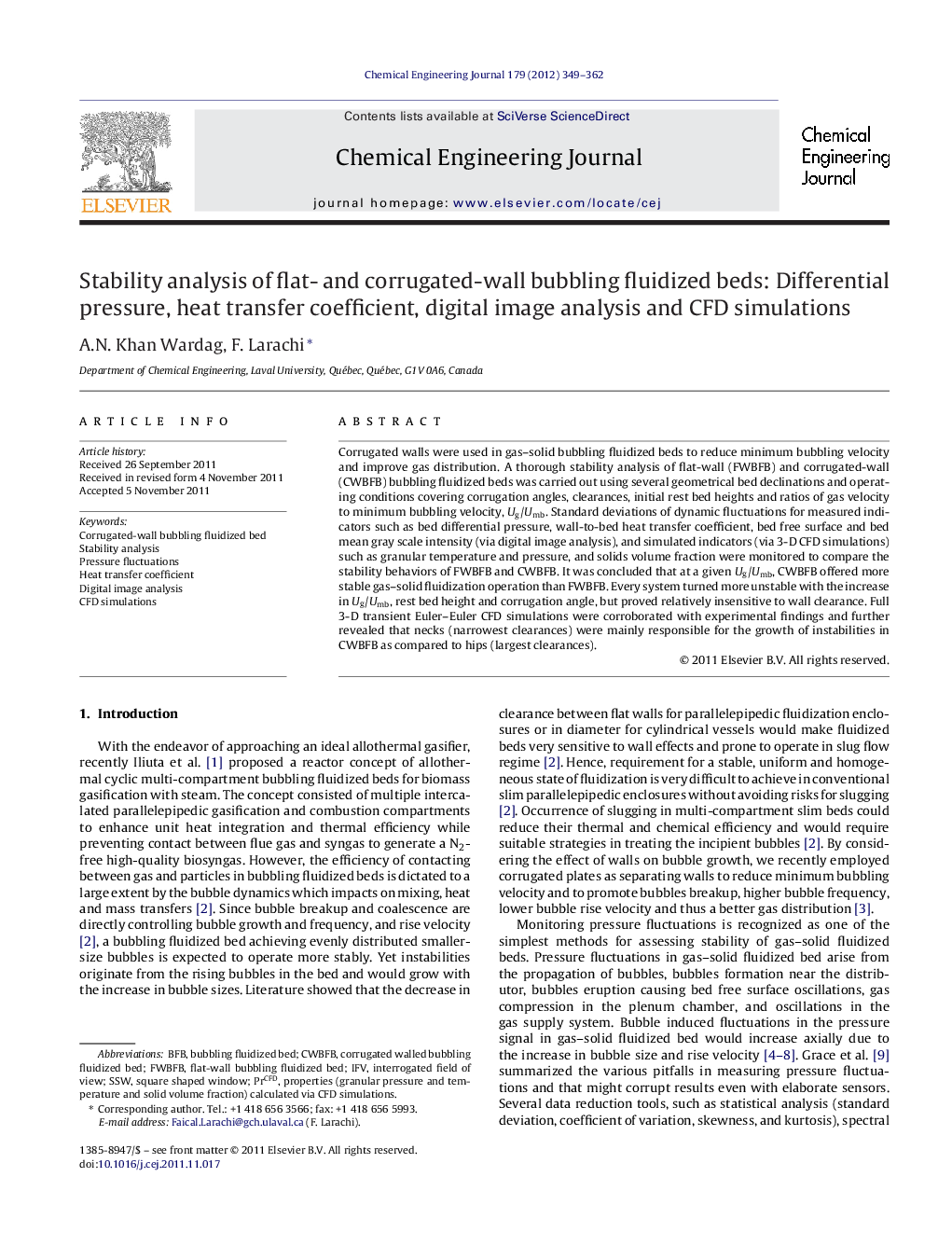| کد مقاله | کد نشریه | سال انتشار | مقاله انگلیسی | نسخه تمام متن |
|---|---|---|---|---|
| 150429 | 456449 | 2012 | 14 صفحه PDF | دانلود رایگان |

Corrugated walls were used in gas–solid bubbling fluidized beds to reduce minimum bubbling velocity and improve gas distribution. A thorough stability analysis of flat-wall (FWBFB) and corrugated-wall (CWBFB) bubbling fluidized beds was carried out using several geometrical bed declinations and operating conditions covering corrugation angles, clearances, initial rest bed heights and ratios of gas velocity to minimum bubbling velocity, Ug/Umb. Standard deviations of dynamic fluctuations for measured indicators such as bed differential pressure, wall-to-bed heat transfer coefficient, bed free surface and bed mean gray scale intensity (via digital image analysis), and simulated indicators (via 3-D CFD simulations) such as granular temperature and pressure, and solids volume fraction were monitored to compare the stability behaviors of FWBFB and CWBFB. It was concluded that at a given Ug/Umb, CWBFB offered more stable gas–solid fluidization operation than FWBFB. Every system turned more unstable with the increase in Ug/Umb, rest bed height and corrugation angle, but proved relatively insensitive to wall clearance. Full 3-D transient Euler–Euler CFD simulations were corroborated with experimental findings and further revealed that necks (narrowest clearances) were mainly responsible for the growth of instabilities in CWBFB as compared to hips (largest clearances).
► Corrugated-wall bubbling fluidized beds are more stable than flat-wall beds.
► Corrugated walls reduce minimum bubbling velocity and improve gas distribution.
► Mainly necks (smallest clearance) create instabilities in CWBFB than hips (largest).
► Instability increases with increase in gas flowrate, rest height and corrugation angle.
► CFD simulations attribute inception of instabilities to the necks in corrugated beds.
Journal: Chemical Engineering Journal - Volume 179, 1 January 2012, Pages 349–362